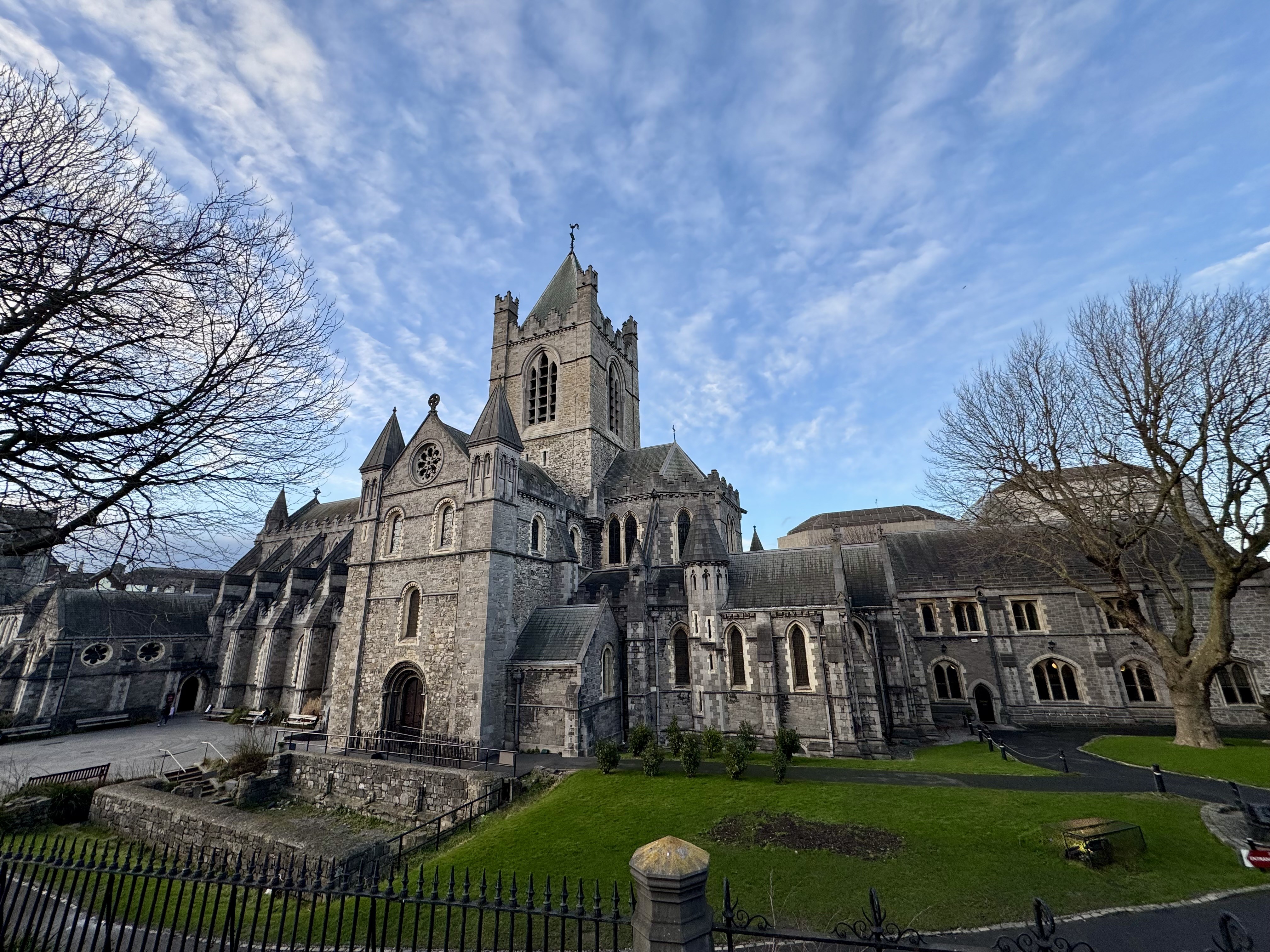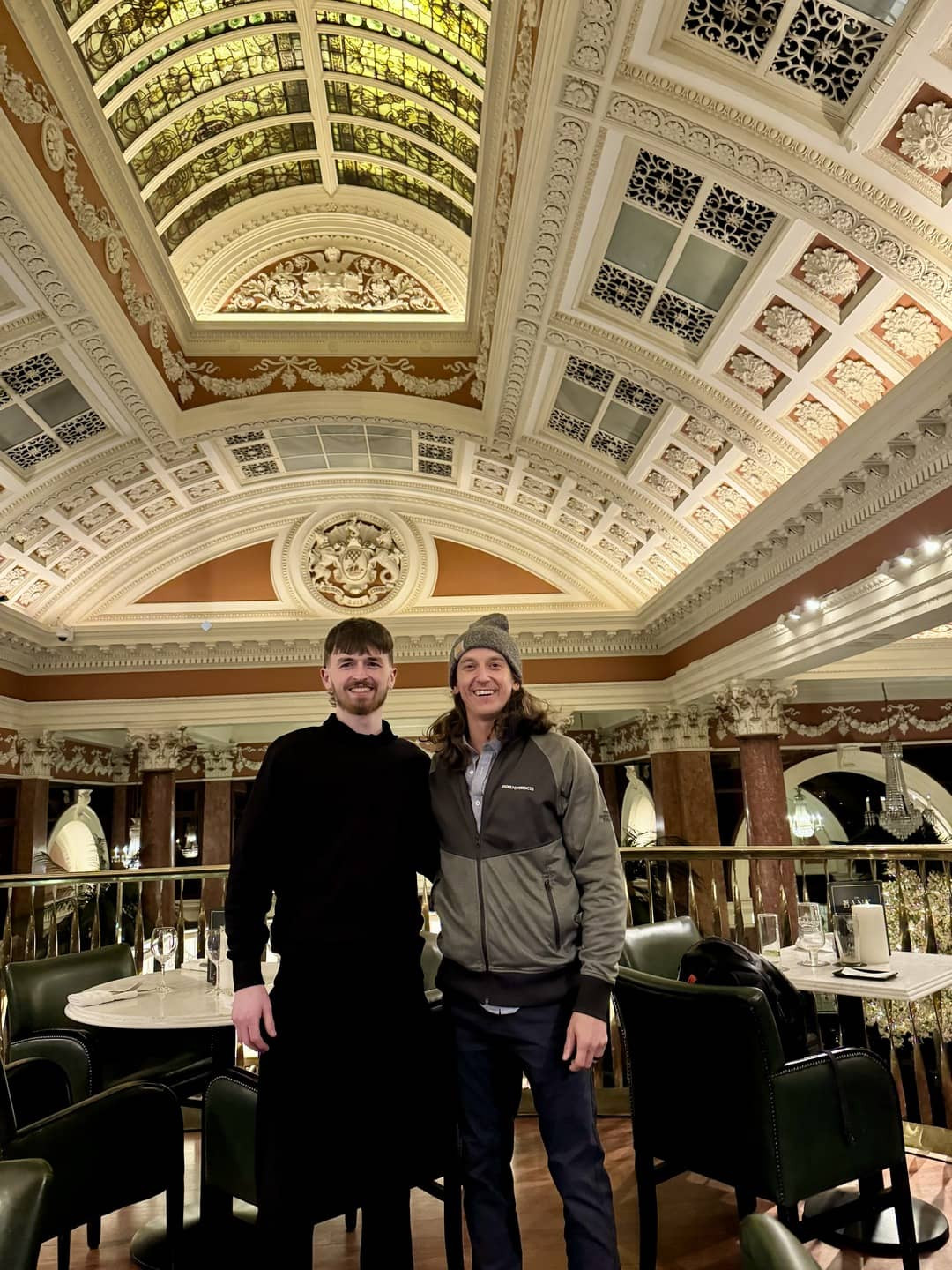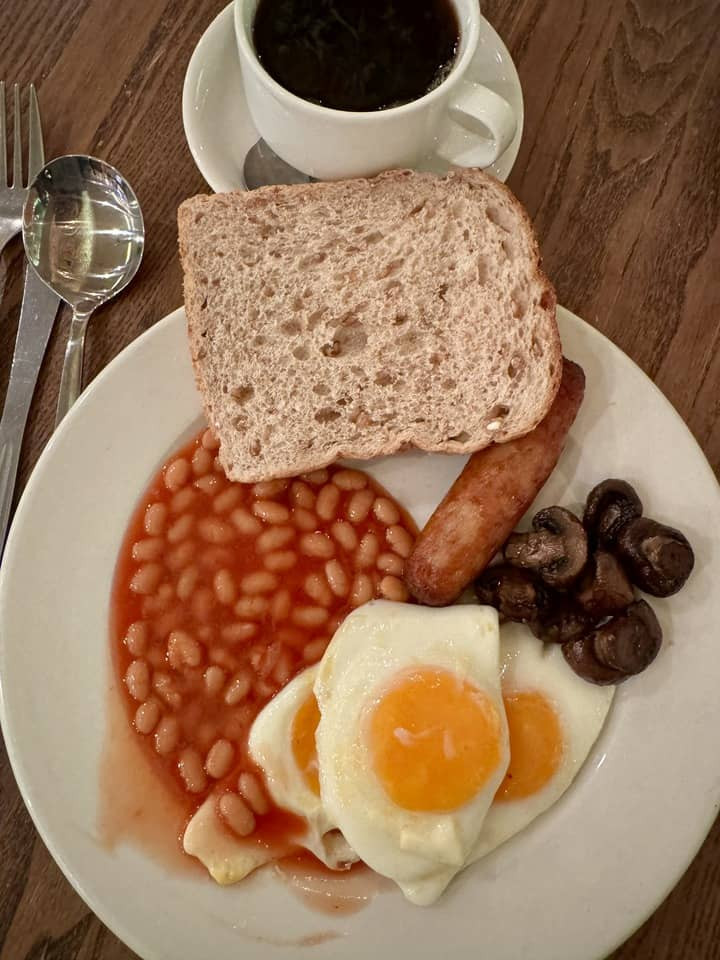Ireland, with its breathtaking landscapes and vibrant culture, beckons travelers from all corners of the globe. But Is Ireland Safe To Travel To Right Now? Absolutely! Ireland consistently ranks high on the Global Peace Index, making it a remarkably safe destination. SIXT.VN is here to ensure your journey to Ireland is not only safe but also seamless and unforgettable, offering expert travel advice and reliable services. With SIXT.VN, embrace the Emerald Isle with confidence, knowing you’re supported by top-notch travel solutions that make your Irish adventure truly remarkable and secure.
1. Overall Safety in Ireland: A Peaceful Haven
Ireland’s reputation for safety is well-deserved. According to the 2024 Global Peace Index, Ireland ranks second globally, just behind Iceland. This impressive ranking reflects the country’s commitment to peace and security. While this statistic provides a broad overview, it’s essential to delve deeper into specific areas to understand the nuances of safety in Ireland. Ireland’s overall safety is a testament to its stable society and strong community values. For travelers, this translates to a relaxed and secure environment, allowing them to fully immerse themselves in the Irish experience without undue worry. With its stunning landscapes and welcoming culture, Ireland offers a unique blend of adventure and tranquility, making it an ideal destination for all types of travelers.
2. Safety in Dublin: Common Sense is Key
Dublin, the vibrant capital of Ireland, is generally safe for tourists. However, like any major city, it’s not immune to crime. The US State Department advises that theft and petty crime have increased in recent years. Therefore, exercising common sense and taking basic safety precautions is crucial.
2.1. Precautions to Take in Dublin:
- Avoid Walking Alone at Night: Particularly for female solo travelers, it’s best to avoid walking alone in less crowded areas after dark.
- Guard Your Valuables: Be vigilant in crowded tourist areas like Grafton Street, Temple Bar, and O’Connell Street to avoid pickpocketing. Keep your wallet in your front pocket and carry bags in front of you.
- Be Aware of Your Surroundings: Pay attention to your surroundings, especially in crowded areas or at night. Trust your instincts and avoid situations that feel unsafe.
- Use Reputable Transportation: Opt for taxis or ride-sharing services like Uber to ensure safe transportation, especially at night.
2.2. Addressing Dublin’s Challenges:
Dublin, like many cities worldwide, has faced challenges related to housing and homelessness. However, recent efforts by the city have addressed some of the visible issues, improving the overall environment for tourists. The city’s ongoing efforts to improve infrastructure and social services reflect a commitment to enhancing safety and quality of life for both residents and visitors. Travelers can contribute to this positive change by supporting local businesses and initiatives that promote sustainable tourism. By being mindful and respectful of the community, visitors can help create a more welcoming and secure environment for everyone.
3. Safe Neighborhoods in Dublin: Exploring with Confidence
Dublin is often described as being divided by the River Liffey, with the south side generally considered more affluent and the north side more economically disadvantaged. However, this is a generalization, and both sides of the city offer unique attractions and experiences.
3.1. South Side Highlights:
- St. Stephen’s Green: A beautiful Victorian garden in the heart of the city, surrounded by shops, museums, and cultural landmarks.
- Merrion Square: Home to the National Gallery, National Concert Hall, Little Museum of Dublin, and Oscar Wilde House.
- Grafton Street: A lively pedestrian street stretching up to Temple Bar and Trinity College, filled with shops, restaurants, and street performers.
3.2. North Side Attractions:
- Upper O’Connell Street: Known for the Spire, the Custom House, and the National Leprechaun Museum.
- Croke Park: A historic stadium and home to Gaelic games.
3.3. Safe and Peaceful Areas:
- Portobello: A charming neighborhood within walking distance of Dublin City Centre.
- The Docklands: A modern area away from the city center, featuring the EPIC Irish Emigration Museum, Abbey Theatre, and Point Village.
When exploring different neighborhoods, it’s essential to stay informed and exercise caution. Checking local news and travel advisories can provide valuable insights into any potential safety concerns. By being aware of your surroundings and planning your routes in advance, you can enjoy a safe and enriching experience in any part of Dublin.
4. Common Scams to Watch Out For: Stay Alert
While Ireland is generally safe, it’s important to be aware of potential scams. According to the Australian government, credit card fraud and ATM scams are becoming more common.
4.1. ATM Safety Tips:
- Check ATMs before using them.
- Avoid machines that look unusual or have suspicious attachments.
4.2. Credit Card Safety:
- Never let anyone take your credit card away at a restaurant.
- Ensure the waitperson brings a portable credit card machine to your table.
4.3. Street Scams:
- Be wary of strangers approaching you on the street.
- Avoid taking out your phone if someone asks you for the time, as it could be stolen.
- Be skeptical of sob stories asking for money for bus fare, diapers, or food.
4.4. Rental Car Precautions:
- Thieves often target rental cars.
- Never leave luggage unattended in your vehicle.
- Always lock your doors and take your keys out of the ignition when you exit the car.
5. Getting Around Dublin Safely: Transportation Options
Navigating a new city can be daunting, but Dublin offers various safe transportation options. Understanding these options and taking necessary precautions can ensure a smooth and secure travel experience. From public transport to ride-sharing apps, Dublin provides numerous ways to explore the city with peace of mind. By staying informed and making smart choices, you can enjoy the journey as much as the destination.
5.1. Driving in Dublin:
While renting a car can be convenient, it may not be the safest option for everyone, especially those not accustomed to driving on the left side of the road. Americans, in particular, may find it challenging, and rental car companies often require mandatory insurance due to the increased risk.
5.2. Pedestrian Safety:
When crossing the street, remember to look both ways. Foreigners can easily get hit in countries that drive on the left. Look for “LOOK LEFT” or “LOOK RIGHT” painted at intersections to remind tourists.
5.3. Taxis and Ride-Sharing Apps:
Taxis are reliable in Dublin. For added safety, consider using ride-sharing apps like Uber, which offer features like driver background checks and route tracking. In Dublin, all Ubers are driven by taxi drivers who are held to high standards by the National Transport Authority. Freenow is another popular European alternative to Uber.
5.4. Public Transportation:
Public transportation is a great option for budget-conscious and eco-friendly travelers. Dublin has an extensive bus and train network.
- Dublin Bus: A reliable way to get around the city and its suburbs.
- Bus Éireann: Offers services to destinations outside of Dublin, such as Wicklow, Cork, and Kilkenny.
- DART (Dublin Area Rapid Transit): A train service that runs along the coast, providing access to scenic destinations like Howth and Bray.
- Lua Light Rail: A tram system that operates in Dublin city center.
6. Safe Activities in Dublin: Exploring the City’s Gems
Dublin offers a plethora of activities that are both enjoyable and safe. From exploring historic sites to enjoying the city’s vibrant culture, there’s something for every traveler. Prioritizing safety while engaging in these activities ensures a memorable and worry-free experience.
6.1. Parks and Gardens:
- St. Stephen’s Green: A beautiful Victorian garden in the city center.
- Merrion Square: A historic square with gardens and notable buildings.
- Iveagh Gardens: A hidden gem with serene landscapes.
- Trinity College: Home to beautiful grounds and the famous Book of Kells.
- Phoenix Park: One of the largest urban parks in Europe, home to deer and vast green spaces.
6.2. Churches and Castles:
- St. Patrick’s Cathedral: A stunning cathedral with a rich history.
- Christ Church Cathedral: Another significant religious site with impressive architecture.
- Dublin Castle: A historic castle complex that has played a central role in Irish history.
6.3. Museums:
- National Museum of Ireland: Offers free admission and showcases ancient artifacts, including those found in bogs.
- Irish Rock N Roll Museum: A fun and interactive museum dedicated to Irish rock music.
- National Leprechaun Museum: A whimsical museum that explores Irish folklore and mythology.
- Little Museum of Dublin: A charming museum that tells the story of Dublin through the 20th century.
- EPIC The Irish Emigration Museum: An engaging museum that explores the history of Irish emigration.
- National Gallery of Ireland: Home to an extensive collection of Irish and European art.
- Irish Whiskey Museum: Offers tastings and insights into the history of Irish whiskey.
6.4. Tours and Unique Activities:
- Double-Decker Bus Tours: A convenient way to see the city’s main attractions.
- Gaelic Games Experience: Learn about Ireland’s national sports, including Gaelic football and hurling.
6.5. Whiskey Distilleries:
- Jameson Distillery Bow St.: A popular distillery offering tours and tastings.
- Teeling Whiskey Distillery: A modern distillery with a focus on innovation.
- The Dublin Liberties Distillery: Located in a historic building, offering unique whiskey experiences.
- Pearse Lyons Distillery: Situated in a former church, providing a unique setting for whiskey tasting.
- Roe & Co Distillery: A stylish distillery with a focus on contemporary whiskey production.
6.6. Pubs and Dining:
- The Guinness Storehouse: A must-visit attraction where you can learn about the history of Guinness and enjoy a pint with a view.
- The Brazen Head: Dublin’s oldest pub, dating back to 1198, offering a traditional Irish experience.
- Temple Bar: A lively area with numerous pubs, perfect for a pub crawl (but be aware of crowds and potential pickpockets).
7. Nightlife Safety in Dublin: Enjoy Responsibly
Dublin’s nightlife is a major draw for tourists, but it’s important to take precautions to stay safe. The city offers a vibrant and diverse nightlife scene, but like any urban area, it’s essential to be aware of your surroundings and take steps to protect yourself. By following these tips, you can enjoy Dublin’s nightlife to the fullest while minimizing potential risks.
7.1. General Safety Tips:
- Stay Alert: Be vigilant in crowded areas like Temple Bar, where pickpockets and thieves may operate.
- Secure Valuables: Keep valuables locked up in your hotel. When going out, carry only essential items like cash, a secondary ID, a credit card, and your phone.
- Transportation: Avoid walking alone at night and opt for taxis or ride-sharing services like Uber.
- Drink Spiking: Be cautious of drink spiking. Watch your drink being poured and avoid accepting drinks from strangers.
7.2. Pub Etiquette:
- Avoid Offensive Terminology: Be aware that certain terms like “Irish car bomb” can be offensive in Ireland.
- Take Jokes Lightly: The Irish love to joke around and make fun of each other. Don’t take things too seriously and enjoy the banter.
7.3. Responsible Drinking:
- Drink Responsibly: Pace yourself and know your limits.
- Avoid Confrontation: Things can get unruly late in the night, so avoid confrontation at all costs.
7.4. Police Presence:
- Gardaí: The police presence in Dublin is strong at night. If you need assistance, approach the Gardaí.
8. Political Unrest in Dublin: A Peaceful City
While Dublin experiences protests, the city is generally peaceful compared to other European capitals. Protests typically address issues like climate change, the housing crisis, and social justice. These protests are generally peaceful and do not escalate to large-scale chaos. It’s always wise to steer clear of any protest activity to ensure personal safety.
9. Terrorism Risk in Dublin: Low Threat Level
The threat of terrorism in Ireland is considered low. There have been no terrorist attacks related to Islamic extremist groups. Ireland’s neutrality and non-membership in NATO may contribute to this lower risk. The Irish Defence Forces (IDF) and Garda Síochána (the national police force) encourage the public to stay vigilant and report any suspicious activity, especially in crowded areas.
9.1. Historical Context:
The conflict between Ireland and North Ireland, known as “The Troubles,” lasted from 1960 to 1998. Since the Good Friday Agreement of 1998, the two countries have enjoyed a relatively peaceful relationship.
10. Natural Disasters in Ireland: Minimal Risk
Dublin is well sheltered from natural disasters. The city experiences low seismic activity, few droughts, and rare snowfall. Heavy rainfall and wind are the most common natural occurrences, and Ireland is well-equipped to handle them.
11. Emergency Numbers in Dublin: Know Who to Call
In the event of an emergency, dial 999 or 112. This will connect you to the ambulance, fire department, or Gardaí (police).
11.1. Non-Emergency Contacts:
- Store Street Garda Station: +353 1 661-0562
- Pearse Street Garda: +353 1 666-9000
11.2. Tourist Assistance:
Dublin offers a free tourist assistance service that can help you report a crime, reschedule flights, or assist you in an emergency.
11.3. US Embassy in Dublin:
- Address: 42 Elgin Road, Ballsbridge, Dublin 4
- Phone: +353 1 668-8777
US citizens should enroll in the Smart Traveler Enrollment Program (STEP) to receive assistance in an emergency.
12. Hospitals and Clinics in Dublin: Access to Healthcare
The main hospital and emergency room near Dublin city center is St. James’s Hospital, located at:
- Address: James St, Saint James, Dublin 8
- Phone: +353 1 410-3000
13. Health Risks in Ireland: Similar to the US
Health risks in Ireland are very similar to those in the United States. The US Center for Disease Control recommends routine vaccinations. The water is clean to drink in Dublin.
14. Travel Insurance: A Wise Investment
It’s always a smart move to have travel insurance. Unexpected issues can arise anywhere, so consider getting coverage to protect against trip disruptions, lost or stolen luggage, and medical costs.
15. Why Travel to Dublin? An Unforgettable Experience
Dublin is a fantastic city to visit, offering a unique blend of history, culture, and natural beauty. Everyone speaks English, making it easy to navigate, and it’s generally safe if you use common sense. Whether you’re exploring historic sites, enjoying the vibrant nightlife, or simply strolling through the city’s charming streets, Dublin offers an unforgettable experience for every traveler.
16. Group Trips to Ireland: Safety in Numbers
Going on a group trip is a fantastic option for solo travelers. There is strength in numbers, and you’ll have a local guide who knows how to keep you safe. Group trips also provide opportunities to meet new people and share experiences.
FAQ: Your Safety Questions Answered
1. Is Ireland a safe country for solo female travelers?
Yes, Ireland is generally safe for solo female travelers. However, it’s important to take precautions like avoiding walking alone at night and being aware of your surroundings.
2. What are the most common crimes in Dublin that tourists should be aware of?
The most common crimes are theft and pickpocketing, particularly in crowded tourist areas.
3. Is it safe to use public transportation in Dublin?
Yes, public transportation in Dublin is generally safe. However, it’s always a good idea to be aware of your belongings and surroundings.
4. Are there any specific areas in Dublin that tourists should avoid?
While most areas of Dublin are safe, it’s best to avoid walking alone in less crowded areas at night.
5. What should I do if I experience a medical emergency in Dublin?
Dial 999 or 112 for emergency services. St. James’s Hospital is the main hospital near Dublin city center.
6. Is the tap water safe to drink in Dublin?
Yes, the tap water is safe to drink in Dublin.
7. What is the best way to get around Dublin safely at night?
Taxis and ride-sharing services like Uber are the safest options for getting around Dublin at night.
8. Should I be concerned about political unrest or terrorism in Dublin?
The risk of political unrest and terrorism in Dublin is low. However, it’s always wise to be vigilant and report any suspicious activity.
9. What are some essential safety tips for visiting pubs and nightlife areas in Dublin?
Stay alert, secure your valuables, avoid walking alone at night, and be cautious of drink spiking.
10. Where can I find reliable travel insurance for my trip to Ireland?
Consider reputable travel insurance providers like Wanderwell, SafetyWing, and World Nomads.
SIXT.VN: Your Partner for a Safe and Memorable Trip to Ireland
At SIXT.VN, we understand that safety is a top priority for travelers. That’s why we’re committed to providing you with the information and services you need to enjoy a secure and unforgettable trip to Ireland. From reliable airport transfers to carefully curated tour packages, we’re here to support you every step of the way.
Our Services Include:
- Expert Travel Advice: Stay informed with our up-to-date safety briefings and travel tips.
- Airport Transfers: Enjoy a seamless and secure arrival and departure with our professional airport transfer services.
- Hotel Bookings: Choose from a wide selection of safe and conveniently located hotels.
- Sightseeing Tours: Explore Dublin and beyond with our guided tours, designed to showcase the best of Ireland while prioritizing your safety.
- 24/7 Support: Our dedicated support team is available around the clock to assist you with any questions or concerns.
Don’t let safety concerns hold you back from experiencing the magic of Ireland. With SIXT.VN, you can travel with confidence, knowing that you’re in good hands. Contact us today to start planning your dream trip to Ireland!
Address: 260 Cau Giay, Hanoi, Vietnam
Hotline/Whatsapp: +84 986 244 358
Website: SIXT.VN
 Strolling past the Dublin Spire on Upper O’Connell, capturing the essence of Dublin's architectural charm and bustling city life.
Strolling past the Dublin Spire on Upper O’Connell, capturing the essence of Dublin's architectural charm and bustling city life. A wooden tray displaying various glasses and bottles at the Irish Whiskey Museum, showcasing a selection of fine spirits and the rich heritage of Irish whiskey.
A wooden tray displaying various glasses and bottles at the Irish Whiskey Museum, showcasing a selection of fine spirits and the rich heritage of Irish whiskey. Exploring St. Stephen’s Green, capturing the serenity of the Victorian gardens and the vibrant atmosphere of Dublin's green spaces.
Exploring St. Stephen’s Green, capturing the serenity of the Victorian gardens and the vibrant atmosphere of Dublin's green spaces. St. Patrick’s Cathedral with a clock tower against a clear blue sky, showcasing its impressive architecture and grandeur, symbolizing Dublin's rich historical and religious heritage.
St. Patrick’s Cathedral with a clock tower against a clear blue sky, showcasing its impressive architecture and grandeur, symbolizing Dublin's rich historical and religious heritage. Two men standing in a spacious room with a high ceiling, engaged in conversation, depicting collaborative insights shared with an Irish tour guide.
Two men standing in a spacious room with a high ceiling, engaged in conversation, depicting collaborative insights shared with an Irish tour guide. A traditional Irish breakfast featuring beans, eggs, toast, and sausage on a plate, presenting a hearty start to the day and a taste of Irish culinary traditions.
A traditional Irish breakfast featuring beans, eggs, toast, and sausage on a plate, presenting a hearty start to the day and a taste of Irish culinary traditions.



